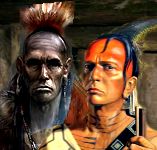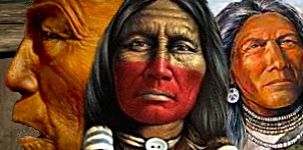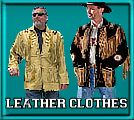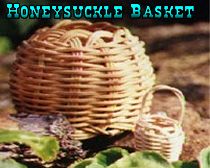 |
|
 |
|||
 |
 |
 |
 |
||
|
|
|||||
      |
cherokee culture |
Artifact Replicas|Jewelry|Clothing|Figurines|Art Prints|On Sale|Closeouts
Custom Search
What's New Cherokee CultureCherokee cultural practices vary from clan to clan, location to location, family to family, or even among individual Cherokee people. The following is general cherokee culture information and may not be true of all Cherokee people. Follow the links within this article for more information.  Original Cherokee territories Cherokee Arts and Crafts  Other traditional Cherokee crafts include the carving of soapstone, primarily for pipes, weaving, creation of elaborate dance masks, pottery, beadwork, and various kinds of metalsmiths. They are also famous for their Star Quilts. Cherokee Burial CustomsCherokee traditionally buried their dead in the earth as they believed that the plants fed the animals, the animals and plants fed the people, and the people, at their death, should return to the earth and feed the plants. Burial usually took place the day after the person died. Cherokee ClothingCherokee men once wore only a breechcloth and moccasins in warm weather. In colder weather they added leggings and a fringed hunting jacket. Chiefs and priests wore long, full cloaks made of feathers and feather caps (not the traditional and popular plains Indian headdress) or cloth turbans. The men shaved their heads, leaving a topknot (sometimes called a scalplock), which they allowed to grow long, and often their bodies and faces were tattooed. In warm weather women wore only a short skirt and added a poncho-like top during the winter. In the early 1800s,the Cherokee Tear Dress became the standard traditional fashion for Cherokee women, and the ribbon shirt is worn by men on special occasions. Both have become the standard "regalia" for Cherokee powwow dancing. Both the Ribbon Shirt and the tear dress are made from cotton calico. The "tear" dresss is so called because in the old days, most Cherokee women didn't have scissiors, so they would "tear" a rectangle or square from a larger bolt of material. This dress style was in vogue during the Trail of Tears forced march, so the word "tear" can be pronounced either way, as in to "tear" the fabric, or Trail of "Tear" dress. Women made the clothing, but men made the moccasins. Cherokee DancesCherokee Domestic AnimalsPrior to European contact, the Cherokee had domesticated dogs, which they used for food and pack animals. Early on, the Cherokees began raising cattle, hogs, chickens, and other domesticated animals acquired from Europeans. The Cherokee began keeping and breeding horses about 1720, soon developing large herds. Because traders used horses to carry their packs, the Cherokee word for trader was the same as the word for horse, sogwili. Traditional Cherokee AlliesAllied with Britain in the French and Spanish Wars, Fought on both sides of the Civil War. Traditional Cherokee EnemiesCatawba, Chickasaw, Choctaw, Iroquois, Delaware, Seneca, Creek, Osage, Seminoles First Contact with EuropeansThe Cherokees' first interaction with Europeans was a brief encounter with Spanish explorer Hernando DeSoto in 1540. English colonial traders began to appear among the Cherokees around 1673. The Cherokee first went to war with the colonists in 1711. During the 1700s, three major smallpox epidemics devastated the Cherokee population, each epdemic killing one-third to one-half of the Cherokee population at the time. From an estimated population of thirty-five thousand in 1685, about seven thousand survived in the mid-1760s. Cherokee FoodsCherokee GamesCherokee GovernmentCherokee oral tradition tells of a time when the Cherokees were ruled over by a powerful priesthood called the ani-Kutani. When the priests took away a young man's wife, he organized a revolt and all the priests were killed. Since then, according to the tale, the Cherokees have had a democratic government. Unified by language, traditions, and its clan system, the Cherokee nation had no centralized government or written laws. Towns governed themselves by democratic consensus, and each had its own priest, war chief, and peace chief. Today, the three-branch government is composed of a chief executive called the principal chief, a legislature called the Tribal Council, and a judicial branch called a tribunal made up of three tribal justices. Cherokee HousesCherokee Kindred SystemsCherokee LanguageThe Cherokee language belongs to the Iroquoian family of languages and is related to Mohawk, Seneca, Onondaga, Oneida, Cayuga, and Tuscarora, among others. According to scholars, the Cherokee language became a separate, distinct language at least thirty-five hundred years ago (1500 B.C.).It is a complex and difficult language; in his Cherokee-English Dictionary, for example, Durbin Feeling lists 126 forms of a single verb. Cherokee has been a written language at least since 1821, when Sequoyah (c. 1770-1843),produced a Cherokee Syllabary for that purpose. (A syllabary is a writing system in which each symbol stands for an entire syllable. In the Cherokee syllabary, for instance, the symbol "A" stands for the sound "go.") Although Sequoyah is credited with inventing the syllabary, some Cherokees say that the syllabary is an ancient Cherokee writing system which was kept secret until Sequoyah decided to make it public. The Cherokee language is still in wide use today. Many children still grow up with Cherokee as their first language, learning English when they go to school. Bilingual education programs in the public schools also encourage continued use of the language. Cherokee GreetingsOsiyo or 'siyo is usually translated as "hello" and it may be followed by Tohiju?-How are you? or Are you well?. One response is tohigwu-I am well. Wado is "thank you." Howa means all right, or okay. "Man" is asgaya; "boy" is achuja. "Woman" is agehyuh and "girl," agehyuja. "Cherokee Nation" is translated as Chalagihi Ayehli (or Jalagihi Ayehli), using the "Cherokeeized" version of the word Cherokee (with the place ending "hi") and the versatile word ayehli, which can mean "center," "soul," or "nation." Cherokee Legends / Myths / Oral StoriesCherokee Medicine Men and Healing PlantsSacred AnimalsThe cougar and the owl hold special significance to the Cherokee people. It is said they were the only animals who stayed awake during the seven nights of creation, so to this day they are nocturnal. Cherokee culture associated the spaces on the back of the turtle with the 13 yearly phases of the moon. Sacred ColorsThe sacred colors of the Cherokee correspond to: East = red = success; triumph - Red is also the color of the East Wind Messenger, "Ka na ti" which is symbolized by the Thunder Bird. "Ka na ti" is the father of the South Wind and West Wind--thunder and lightning. This spirit being controls time and space. He precedes the Sun each morning to announce her arrival. North = blue = defeat; trouble - North Wind Messenger = black - He is called "Yah wi gu na he da", Long Human being. This being is the spirit of all of the rivers and controls the winds that bring the winter season. He would cause great mischief if not for the watchful eyes of the South Wind and West Wind Messengers which keep him in check. West = black = death West Wind Messenger = brown - He is called "Nuh sa wi", the Dark Magician. The West Wind Messenger represents lightning. South = white = peace; happiness South Wind = yellow - The name of the South Wind Messenger is "U sa wi", the Light Magician. This spirit being ushers in the summer seasons. Together with his twin brother, the West Wind, they manage the rain, wind and lightning throughout summer and autumn. Together they force the North Wind back to his home after his allotted time. Green = Clan color for the AniGatogewi, the Wild Potato Clan. Yellow = Clan color for the AniGilohi, the Long Hair Clan. Brown = Clan color for the Ani Kawi, the Deer Clan. Purple = Clan color for the Ah-ni-tsi-sk-wa, the Red Tailed Hawk Clan. Blue = Clan color for the Ah-ni-sa-ho-ni, the Blue Holly Clan. White = Clan color for the Ah-ni-wo-di, the Paint Clan. Red = Clan color for the Ani'-Wah' Ya, the Wolf Clan. Sacred PlacesThe Cherokee consider all rivers and streams to be sacred places. Every day began with the going-to-water ceremony, when everyone entered a stream near their village, faced east, and prayed to the seven directions: the four cardinal points, the sky, the earth, and the center—the spirit. They gave thanks for a new day, and washed away any feelings that might separate them from their neighbors or from the Creator, emerging cleansed physically, mentally, and spiritually. Sacred PlantsCedar, pine, spruce, laurel and holly trees are among the most important plants in Cherokee medicine and ceremonies. The cornerstone of Cherokee crops - corn, beans, and squash - are known as the three sisters. There is a legend to explain how they came to the Cherokee people. Each of the seven clans also has a sacred wood. They are:
Cherokee PrincessThe only Cherokee princess is the modern kind appointed to represent the tribe for a year to act as a goodwill ambassador at parades, festivals, and other special events. Even then, this person officially holds the title of "Miss Cherokee," not "Princess." If you were told your great grandmother was a Cherokee princess, the information is incorrect. The Cherokee do not have a royalty system, (and never have) and chiefdoms are not hereditary. Cherokee Religious Ceremonies / FestivalsSignificance of Numbers to the CherokeeThe numbers four and seven repeatedly occur in myths, stories and ceremonies. Four represents all the familiar forces, also represented in the four cardinal directions. The number seven represents the seven clans of the Cherokee, and is also associated with directions, which include above, below, and within, as well as the four cardinal points. The emblem of the Cherokees is a seven pointed star. Spirits and Supernatural BeingsThe Cherokee believe in "Little People," who are not considered to be supernatural, but they can only be seen when they want to be seen. If a Cherokee sees a little person, it is considered tabboo to discuss it with anyone for at least seven years. Little People have really long hair, and often help lost or sad children. Their permission must be asked before picking up anything from the woods—a stone, a feather, a leaf—and if their permission is given, a gift must be left in return. The Cherokee also believe in ghosts, which are supernatural spirits of people who have passed on, but choose to remain on Earth. The Four Winds are spirit beings, the Creator's messengers, that were placed at the four corners of the world in the beginning of time by the Creator. The task of the Messengers is to attend to the cycle of the four seasons of the year. Cherokee Taboos
Cherokee WeaponsThe early Cherokee had long bows that were so stout that Europeans could not pull their bows. They could shoot an arrow powerful enough to pass completely through the hind quarters of a horse and travel all the way to it's heart. They used an atlatl to throw spears with great force. Flint was the preferred material for arrowheads because it was easier to knapp than most other stones, and was plentiful. The Cherokee weapon alsenal also included blowguns up to nine feet long to hunt small game. They also had stone war clubs, and later axes and guns aquired through trade with Europeans. Cherokee Marriage CustomsCherokee marriage customs forbade marrying within the clan of either your father or mother. Some Cherokee still have traditional wedding ceremonies, but some Cherokee people have a modern wedding ceremony performed in a church. Some people have both a traditional Cherokee wedding and a civil ceremony. Cherokee AccomplishmentsThe Cherokee Nation established the first free, compulsory public school system, established the first institution of higher learning west of the Mississippi River, and installed the first telephone west of the Mississippi. Cherokee Civil War SoldiersAmericans are usually surprised to learn that the Civil War was bitterly contested between the Native Americans in Oklahoma. For the Cherokee, it was very much a war of brother against brother. 3,000 Cherokee (usually New Settlers) enlisted in the Confederate army while 1,000(Old Settlers) fought for the Union. In the east 400 North Carolina Cherokee, virtually every able bodied man, served the South. Cherokee Civil War Units included: First Cherokee Mounted Rifles (First Arkansas Cherokee); First Cherokee Mounted Volunteer (Watie's Regiment, Cherokee Mounted Volunteers); Second Regiment, Cherokee Mounted Rifles, Arkansas; First Regiment, Cherokee Mounted Riflemen; First Squadron, Cherokee Mounted Volunteers (Holt's Squadron); Second Cherokee Mounted Volunteers (Second Regiment,Cherokee Mounted Rifles or Riflemen); and Cherokee Regiment(Special Service). Heavily involved in the fighting throughout the war, the Cherokee Nation lost more than 1/3 of its population. No state, north or south, even came close to this. On June 23, 1865, Stand Watie was the last Confederate general to surrender his command to the United States. Other Cherokee groupsThere are some 200,000 people who self identify as Cherokee but are not enrolled in the federally recognized bands. Some of these are enrolled in bands that are recognized by individual states, but not by the federal government, while others are those who self identify for other reasons. There are currently about 30 Cherokee groups seeking recognition as Cherokee nations or tribes from the Bureau of Indian Affairs (Official Statement of Cherokee Nation, 2000). However, the last group to gain recognition as a Cherokee tribe was the United Keetoowah Band of Cherokees more than 50 years ago. Some groups calling themselves Cherokee do not seek recognition, but rather seek to give people with some vague knowledge of Cherokee ancestry a way to learn about and share in that heritage. The Deer Clan and its umbrella organization, the Southeastern Cherokee Confederacy, are an example of this. While some of these groups do try to push their members to show some form of proof of Cherokee heritage, even if it is not in a form accepted by any of the three official groups, others do not. This situation has caused a great deal of stress and pain for the Cherokee Nation. Groups claiming to be Cherokee often attempt to solicit money, open Native themed stores, or even run casinos. It is estimated that more than 200 such groups falsely and fraudulently claim such ties. A group calling themselves the Southern Cherokee Nation was able to claim gaming rights in Oklahoma and South Carolina and was nearly able to get a casino before they were stopped (Pierpoint 2000). Although many groups calling themselves Cherokee are not seeking economic gain through this designation, and rather seek through it education and personal fulfillment, groups such as the Southern Cherokee Nation cause many registered Cherokee to be deeply distrustful of those who claim to be Cherokee without belonging to the official groups. Cherokee Nation Statement on Heritage Groups"There are more than 200 groups that we’ve been able to recognize that call themselves a Cherokee nation, tribe, or band," said Mike Miller, spokesman for the Cherokee Nation (the one based here in Tahlequah, at the W.W. Keeler Tribal Complex). "Only three are federally recognized, but the other groups run the gamut of intent. Some are basically heritage groups – people who have family with Cherokee heritage who are interested in the language and culture, and we certainly encourage that," said Miller. "But the problem is when you have groups that call themselves ‘nation,’ or ‘band,’ or ‘tribe,’ because that implies governance." Listing of Cherokee Heritage GroupsAny groups using the title Nation, Tribe, or Band who are not Federally Recognized are annotated as (Federally Unrecognized) or listed under the group of Federally recognized tribes they are affiliated with based upon membership and group composition. These include, but are not limited to: Mexican Cherokee Heritage Groups New Mexico Cherokee Townships Albuquerque Cherokee Nation Township (Cherokee Nation) Arkansas Cherokee Heritage Groups Missouri Cherokee Heritage Groups Ani-kutani (United Keetoowah Band of Cherokee Indians, Cherokee Nation, Eastern Band) Kentucky Cherokee Heritage Groups Southern Cherokee Nation (Federally Unrecognized) Tennesee Cherokee Heritage Groups Texas Cherokee Heritage Groups Oklahoma Cherokee Heritage Groups 
Indian Country Map Art Print 36 in. x 23 in. Buy at AllPosters.com Framed Mounted |
|
||||||||||||||||||||||||||||||||||||||||||||||||||||||||||||||||||||||||||||||||||||||||||||||||||||||||||||||
| ||||||||||||||||||||||||||||||||||||||||||||||||||||||||||||||||||||||||||||||||||||||||||||||||||||||||||||||||
Site Designed by: Mazaska Web Design
Hosted by: HostIt4You.com
© 1999-2008 AAANativeArts.com
+1133
file: cherokee culture

